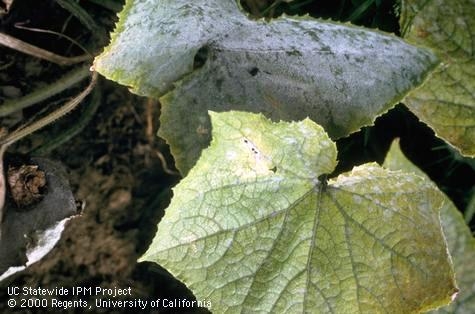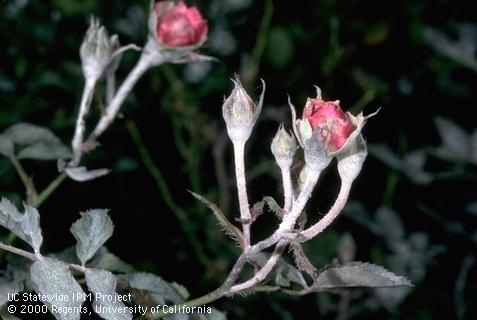
Unlike many diseases, powdery mildews generally do not require moist conditions to establish and grow, and normally do well under warm conditions; thus they are more prevalent than many other leaf-infecting diseases under California's dry summer conditions.
Management Tips
Several cultural practices can reduce the incidence of powdery mildew: grow plants in sunny locations, provide good air circulation, and avoid over-fertilization with nitrogen, which causes lush growth that can encourage disease.
Resistant varieties are available for many garden plants including apple, beans and peas, crape myrtle, cucumber, melons, London plane tree, peach, pumpkins, raspberry, rhododendron, squash, and zinnia.
Some susceptible plants may need fungicide applications. There are a number of low-toxicity products available. Horticultural oil products, including plant-based oils such as neem oil and petroleum oils, are among the most effective fungicides for powdery mildew. They are also very safe for the environment. A biological fungicide, Serenade, is also available. Sulfur products are effective if applied before symptoms occur, whereas oils will also control existing infections.
See the Pest Notes on Powdery Mildew on Fruits and Berries, Powdery Mildew on Ornamentals, and Powdery Mildew on Vegetables for more information on these diseases and their management.
Author - Associate Director for Urban & Community IPM/ Area Urban IPM Advisor
Attached Images:
